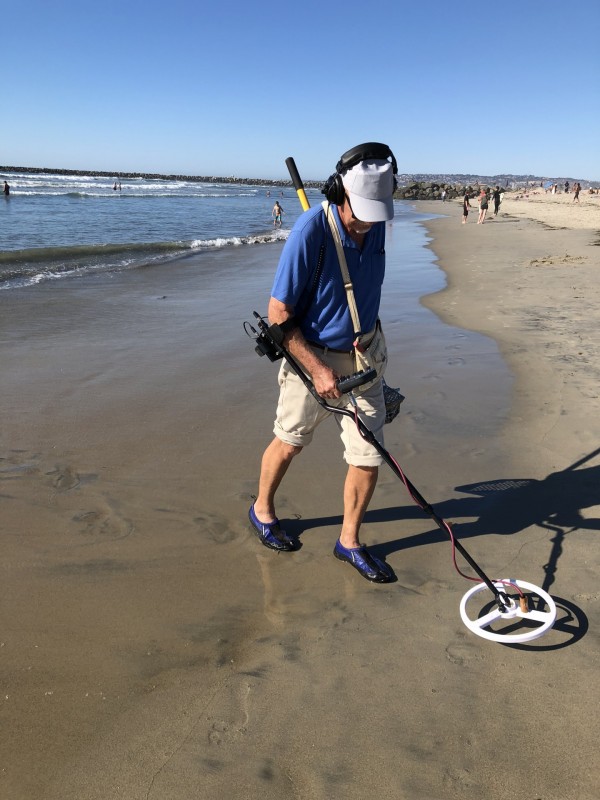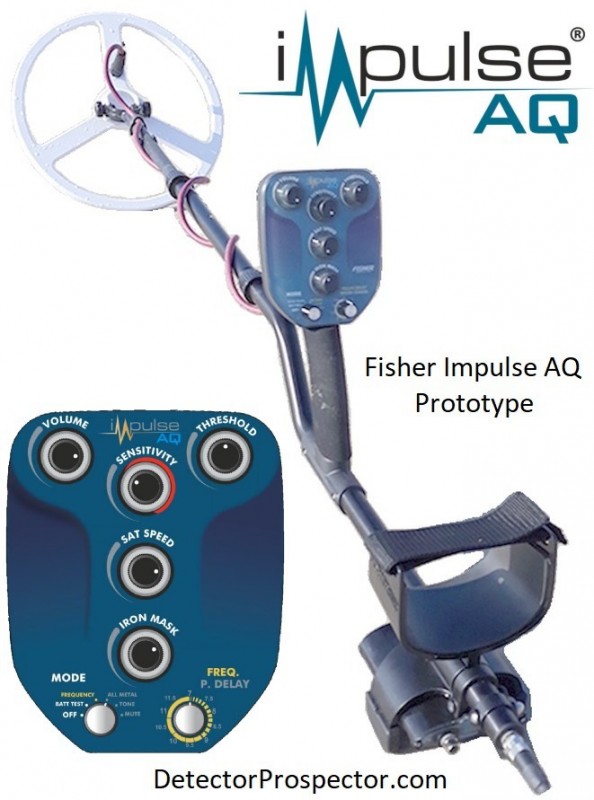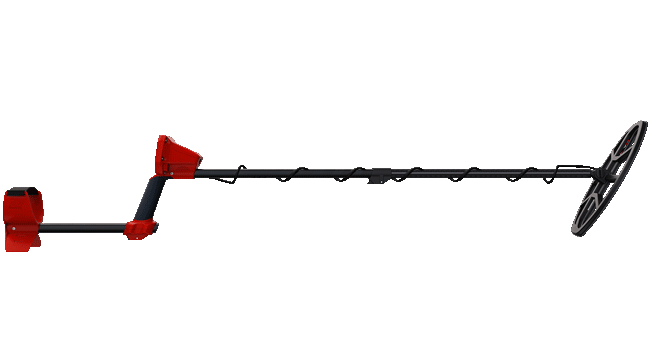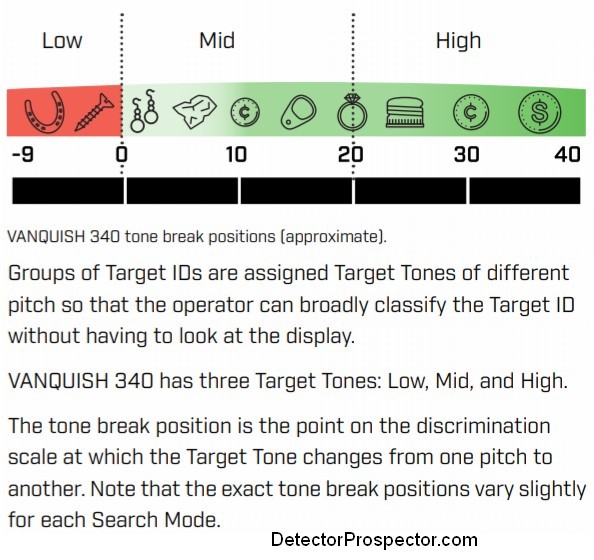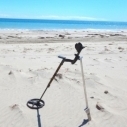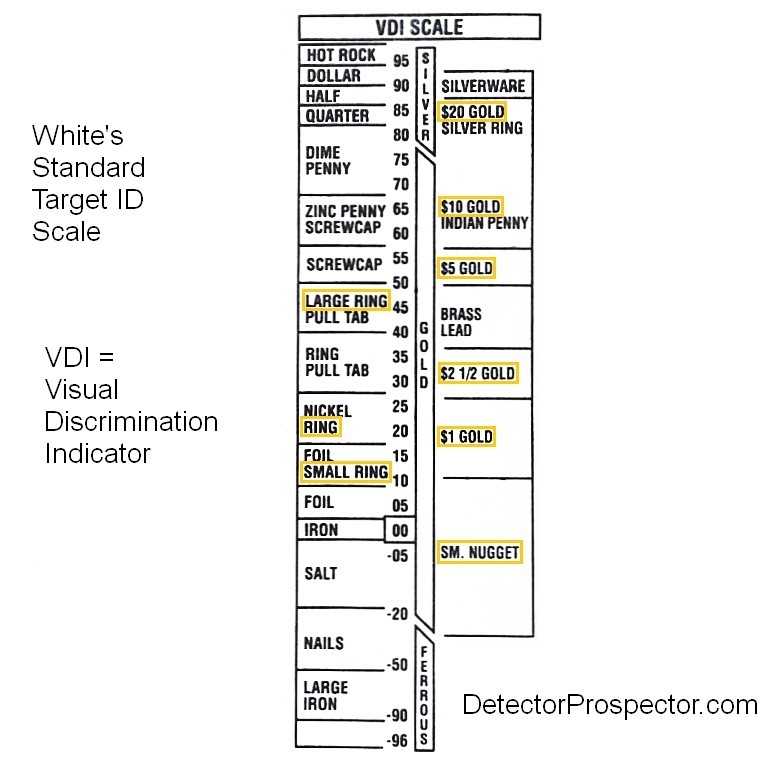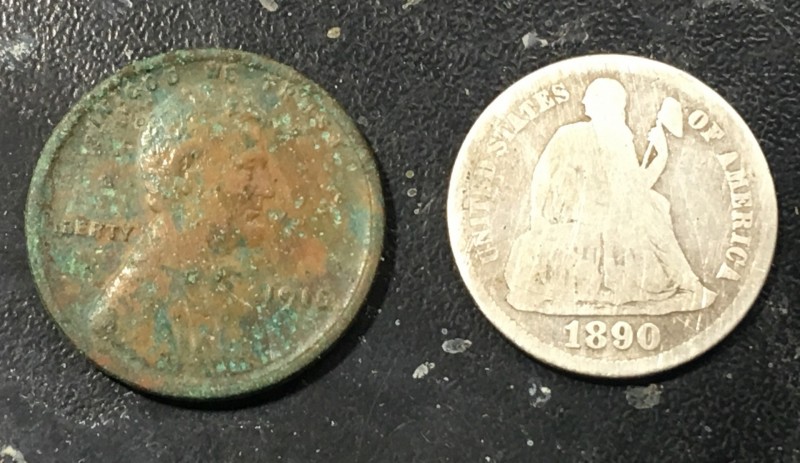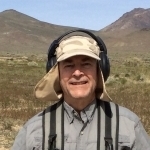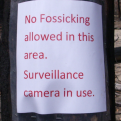Leaderboard
Popular Content
Showing content with the highest reputation on 12/23/2019 in all areas
-
Most of you are aware of gold being found with detectors in NV, CA, AZ, AK and even OR or WA on occasion. But the majority (including many who live here in this geological wonder of a state) do not know much about or detect for the elusive Au in Idaho. So I've decided to share a Holiday Special with you, as it is Golden as glee can be. This little glimmer of Au comes in on my postal shipping scale at 1 pound 5.7 ounces = approx 22 oz which is then turned (if my math is correct) to 20 ozt. I did not get a specific gravity test done, but can assure you this astonishing mosaic is about 97% Au. History of this discovery. I'll not provide the name of the finder or site for security purposes. It was found with the Eureka Gold and I know many good pockets of wire gold came from the area. it was unearthed at a location already mined and was missed by the old timers. It is one of the biggest pieces of Idaho gold I myself has ever seen, but I have heard of larger pieces coming from the area. To put a twist on it and to add some beauty to this post, I'd love seeing some of your Idaho Au diggings. No worries about size, value or other as I would (and I am sure many others) enjoy seeing some more Idaho gold.13 points
-
8 points
-
5 points
-
The discrimination function of the AQ works by comparing two samples of the return signal at different points in time from the cut off of the pulse. Targets which are present in the first sample but gone in the second are (in the iron ID modes only) marked as “high conductors”. MInd you, there is more than the type of metal, but also its mass, shape etc. involved. It is quite different from target ID in a VLF system based on phase shift of the returned signal. Now if you haven’t dozed off reading all of that...the short answer is that silver coins in the iron ID mode would likely be ID’s along with iron. But there is an all metal mode and silver hits just fine there (along with nails, bolts, etc.) The skill of using this detector will be in adapting its modes to the targets and ground environment you are detecting in.5 points
-
I am a high school golf coach and my players gave me a $100 gift certificate for Dicks Sporting Goods which is one of the best all-round sporting goods stores in the Denver area. I don't shop there very often so I thought "I'm interested in the Vanquish but only in the 340 since I already have a Nox 600 and 800". I hate taking either of my Noxes or my XPs to tot lots and bark play grounds and I often am helping newbies learn how to detect so for $99, I ordered one on Wednesday Dec. 18th. I received it today, Sunday Dec. 22nd. I gotta say, I was very surprised at the build quality, light weight and operation of the Vanquish 340. Coming from a Deus/Orx owner and a former owner of several Nokta Makro detectors, that is saying a lot. It is easy to adjust for comfortable custom fit and lightweight enough for a child , I don't mind the RED after all, I really like the way the buttons feel, simple operation that anyone can use, very much like the Equinox tones, response, target IDs, intuitiveness and one or two quick horseshoe "all metals" button presses and I can check for iron identification or just stay in no targets discriminated. Again, it really does detect like an Equinox and detects and feels nothing like a Go-Find or even an X-Terra. In coin mode it did high tone false on iron depending on depth so I did dig some rusty nails at 6" to 8" that gave numbers in the high 30s. I was hunting in a silver coin area and would have dug them anyway......in coin mode iron and small foil are supposed to be discriminated. I still dug pull tabs and larger can slaw. Crown caps really do have broken nulling audio and so did those nails so I will have to remember that audio nuance. I really did not miss the lack of an onboard pinpointer. For shallower coins (surface to 4") it gave a clear double beep right over the coin. Dug some nice pre-1982 copper pennies and 2 wheats at 8"...........not bad for a 10"X7" coil in moderate to high mineralization and I was not running it on max sensitivity. In my backyard test bed I have a buried 6" nickel and 6" quarter that every detector I have tried can respond with some kind of audio and totally incorrect numerical target ID. The only detector that I own or have owned that could correctly identify both of these targets was the Equinox. Well, the entry level Vanquish 340 correctly identified both 6" targets AND gave the correct depth. That is saying a lot especially on the 6" nickel which every other detector I have every swung over it (the list is long and includes every manufacturer's detectors, XP, FTP, Garret, Whites, Nokta Makro, Tesoro and including Minelab=X-Terra 705 ) have totally failed to identify this 6" nickel in 4 to 5 bar dirt (F75 and F19 Fe3O4 meters) So, the Multi IQ system in the Vanquish is for real. I really would like to know what the multi frequency range is for the Vanquish too. Mine hit a 2/10 gram small nugget at 3" in the ground and I did not have the sensitivity at max!!!!! I still haven't had the courage to try the Vanquish coil on the Equinox just to make sure (I know Minelab said it will not work.....) Jeff4 points
-
4 points
-
I went ahead and flashed the newest software update. Did some "air testing" afterwards. Seemed stable and well behaved. Did FP before update and after just for good measure. Messed around a little with the notch breakpoints. Wanted quarters to sing out at the highest pitch instead of possibly falling into T4. Maybe not a good idea but want to try it out. Took the Equinox out today to a couple "hunted out" junk holes before the update. Dug some nice pulltabs and can slaw. I knew better than to dig those numbers but was trying to scrape the bottom of the barrel. The conditions were very bad in that 1st place. Down at 10 inches one target laid that was showing 30 and faint, out it came and was a rusty old bolt head looked like. There was also actual coal in this particular hole. In ages past, they used coal to heat the old school. Have hunted this old school many times this year with the ORX and T2. The ORX did find that small silver kid ring in the ground of this area. Pretty sure that place has been hunted before by many others long before I ever detected it. Not wanting to waste anymore time at that place went down the road a piece to a newer school. Have detected this one a few times also with other detectors. Nothing but clad on those old hunts and some little bling like things. Today was the day of small cans. Was getting 25-26 repeatable signal. The little cans like potted meat cans looked like. Dug 3 of them, all down in excess of 7 inches. Dug some nice can slaw, a pull tab, then finally hit a couple clad dimes. Then out in a larger field hit a clad quarter. Walked over to the other wood chip area and found 2 more clad dimes and another clad quarter(8 inches down in mineralized clay). My shoulder was cutting up so it was time to go. Not a total wipe out but I certainly did have to work for these meager things today. I did think today would be a day without any finds at all worth speaking of. Luckily the Equinox came through. Not the unit, the location sucked and maybe I did too a bit. I will say that these 2 places are difficult to hunt, and they have been with everything I've used up until today. To find anything of value is an accomplishment. The Equinox did come through today and punched down into the ground deeper than other detectors have. The soil is difficult in a lot of spots also. I'm confident the Equinox is the right unit, but there is a lot for me to learn with it. This is going to take some time. Nothing but Park 1 today with minor modifications, mainly in tone pitches. I don't foresee myself going back to those 2 spots and if I do it will be quite a while.4 points
-
The new Fisher Impulse AQ is doing something new with pulse induction discrimination. I think I have a pretty good idea of what the engineers are up to and so want to pass on my thoughts in case it will help people have a better idea of what to expect. I have posted numerous articles in the past about coin detecting with ground balancing PI detectors. GBPI detectors split targets into two classes depending on the ground balance setting. The two target classes exhibit by different tones. All Minelab PI detectors do this, as do the Garrett Infinium and ATX, plus the White's TDI series based on the Eric Foster Goldscan. White's on the TDI labeled these as low conductors and high conductors but that is not actually accurate. They are items with a low time constant and items with a high time constant as measured on a pulse induction metal detector. For more on signal decay and time constants see the excellent primer by Reg Sniff Understanding the PI Metal Detector. If you could measure the time constant of the various targets and line them up you would see size has a lot to do with it, small items versus large items regardless of composition. White's TDI "Target Conductivity" switch (notice ground balance on required) I caught on to this fast with the Garrett Infinium in 2004 and Minelab GP 3500 in 2005 and when the time came it was I who suggested the tone switch be incorporated into the White's TDI to allow the user to choose between one of the two classes of targets. Plus the TDI allowed the operator to directly set the ground balance, creating a crude discrimination system for savvy operators. It is actually possible to coin detect with a TDI and dig almost no trash, but you lose its PI depth advantage by setting the machine that way. I preferred using the tones with full depth settings myself with excellent results. The two target classes vary depending on the exact ground balance setting, but generally one one hand you have low conductors and small ferrous targets, and on the other hand coins and large ferrous targets. This means if looking for small gold you dug all manner of small trash including small ferrous trash. Coins were better but you would still dig large nails and other large ferrous items. The TDI allowed a person to advance the ground balance to where most ferrous trash could be eliminated while still getting the coins, but the setting was so close to the coin range to do this that depth suffered as a result, and so was no better than a decent VLF. It's a long read but a lot can be learned by reading the following three links. Coin Detecting with the Garrett Infinium Beach Detecting with the Minelab GP 3500 Coin Detecting with the White's TDI Some Commentary On White's TDI Tuning & Discrimination It can be seen that as far back as 2005 I was predicting that high power PI detectors would find widespread use with beach hunters and relic hunters in particular. That prediction did later come true at Culpepper and other locations. It was obvious to me that this crude discrimination offered more room for improvement. I even emailed Carl Moreland at one time and made mention of the concept of using two ground balance controls to delimit another class of targets beyond the two created with a single ground balance point. But really it is not ground balance, it is just a setting that measures a certain time constant. And that folks, is basically what the Fisher Impulse is doing. It is using at least two dividing points to separate items into three classes, lowest time constant, middle (gold ring) range, and highest time constant The Impulse is eliminating the items with the shortest time constant and the longest time constant and focusing on the mid-range. This eliminates tiny trash and tiny gold, and large ferrous stuff and most coins. What is left is the sweet spot in the middle where gold rings occur plus a yet to be determined range of trash targets. There will be some, that is inevitable, but the vast majority of trash should be eliminated with this approach. This picture shows the result of using the Garret Infinium and separating the short time constant targets from high time constant targets in tot lots. Low constants (nickels and zinc penny plus trash) on left and high constants (copper pennies, dimes, quarters) on right. Notice very little trash with the coins if you dug that class only. But that is deceptive due to the location, which lacked any nails. Garrett Infinium targets separated by tone So take a look at this result from a park, this time only the long/high time constant targets with the TDI... coins and large nails. White's TDI low tone / high time constant targets OK, so let's combine the two to get a clearer picture.... Left of red line low time constant versus right side high time constant targets To reiterate, having only one point of separation presents issues. You get coins but you also get large nails. And the low time constant area is a mess, just way too much stuff including small ferrous. But in areas with few nails it actually works well for coins. The dividing line does vary with the ground balance setting but is roughly about zinc penny if ground balanced in moderate to high mineral ground. The Impulse AQ is basically blowing off the high end to get rid of the nails, and the high conductor coins also get tossed out. Most jewelry hunters will be fine with that - digging coins in the surf is a waste of my time and effort. The AQ is adding another separating point somewhere in that left hand low time constant area, that eliminates the tiny stuff including I assume most wire type ferrous items and foil. Rings due to the round shape with a hole read better than most of the misc trash in the photo. However, some of those items will read in the ring range so do not expect the AQ to be trash free. Trash that reads close to the nickel range will probably come through, like pencil eraser ends and some tabs that read like nickels. If you think of the AQ as a nickel detector that will probably not be far off the mark. My biggest area of concern is zinc pennies, especially corroded ones. I hate those things but I suspect we will be digging them with the AQ. All the above is just speculation based on everything I have learned using this class of detectors over the last 15 years. I have had no part in the AQ development. That said, I think most of what I am describing will prove to be pretty close to the mark as far as how the discrimination functions on the Impulse AQ. And just a reminder. The Impulse AQ will let you turn off the discrimination to run in pure pulse mode, presumably with no ground balance engaged. It should be at similar to but more powerful than the TDI Pro with ground balance shut off. This will not be good for nugget detecting in most areas as it will light up hot rocks, but for many beach detecting situations should be giving us a detector like the famed Eric Foster Deepstar in a much more ergonomic and affordable package.3 points
-
I will say this about the Vanquish series. It's meant to compete with the Ace Series, low end Whites, like the Treasure Master and Pro, as well as others. I've owned a number of Ace's over the past 10 years and a Treasure Pro for my kids to use. I would take the Vanquish over any of them hands down, it's a much better performer both in depth and separation. I agree with Jeff, it's a great park detector and I feel it will do real well on the beaches too. Only place I see it struggling is relic hunting. I took it out this last weekend and compared signals with the Equinox, 70% of the signals were no problem with the Vanquish 540. I had a few that were in too much iron for the Vanquish to separate out and another couple that were too deep.3 points
-
The TID's are VERY close to the Nox. There might be a shift of 1 or 2 numbers on some items. Coins have been the same for me so far.3 points
-
We will have to differ on our opinions about s shafts vs straight ones. I found the balance excellent on the prototypes I handled. As far as your iron “chunks”. Detecting gold beneath iron depends on several factors includingthe size of the gold, it’s purity, the distance between them and the mass of the iron. The video will probably go on my Vimeo site and them a link will be provided to view it.3 points
-
3 points
-
I have nowhere near you all's experience with detecting! Let alone with the Nox! But i just had my 800 out yesterday, after a few months of sleep! At a well eroded beach, and did fine with the stock coil and settings! Beach 2 for the wet sand, for the majority of a 2 hour hunt! There were 4 other detectorists working a fairly small area of beach with mid to higher end detectors! And i worked the area behind them that they had been thru! I looked to be the only one with a Nox! And still found 2 rings, and several older encrusted coins! I ground balanced several times, and was hitting some pretty deep stuff! Including some very small copper and lead pieces! I agree with "if it ain't broke, dont fix it"! And i try not to mess with my settings at this point! I appreciate the thought and experience that went into the Nox's program's, and i; at my experience level; would be wrong to think that i could "out program" the software engineers! That being said, i do appreciate you "Yoda" guys pushing the envelope and finding "never thought of" tweaks that could get more productivity! That is, after all, how the detector companies got to where they are in the first place! Thanks for Testers and Innovator's! 👍👍3 points
-
3 points
-
I share a similar understanding of the 15, 11 and 6 for the Equinox. That can be shown in some of my posts from the beginning. I hunt 90+% of my time on beaches around Santa Monica Bay that has a black sand line from the waves and a wet zone where the wave energy leaves some of the heavier good targets. My large CTX coil seems to do 'better' than the Equinox 15 but I rarely use the 3030 any more. I should because I think I would walk faster with it and not 'miss' targets. I have mentioned to Simon on a number of occasions that I think the 15" Equinox coil is a finicky coil. I think it is better with the latest update but as has been noted I don't know that it gives me much additional depth over my 11" coil. I have upped my volume for negative targets and on my beaches I can dig quarters at 14-15 inches. In order to do that I also dig a lot of bobby pins and iron trash like tent stakes which are nearly invisible as they don't have massive response even tho they are big. I can eliminate some of the black sand by staying 'quick' at around 6 and I keep my sensitivity almost always at 23. I have learned to swing speed hunt certain beaches. If I find a target (the waves make some pockets) I really slow down for that and crusty quarters. My gridding will find more that patch hunting. I do look for the patches and then swing differently. Last night I found a couple of cheap rings and they were 'tiny targets' that I would have missed walking faster. I listen for the fringe signals and bring my 11 back to a good target better than the fringe of the 15 I guess I would say. All that being said, I've found some good targets with a limited amount of time with the 6" coil on the same beaches. It provides a target ID with less variance than the other two coils and I can dig down to 8 inches. I do it once in a while just to have 'fun' and I extend the handle length and swing it over a wider arc so my 'footprint' is larger because the fringe works for me also. On rare occasions I'll set up down to 4 but normally now I like the 11, 23 and stay at 6 with FE and F2 off and stay in Beach 1. Sometimes I'll go into 1 ft of water but that is about the max.3 points
-
Steve and Clive, Since Florida beach hunting is my life, I’ll add the view from my foxhole to this interesting discussion. Without rehashing the good points brought up by both Steve and Clive, I’ll just say that I’ve used both large coils and the stock coil searching our beaches and the surf. In the end, I now use the stock coils exclusively. Yes, the larger coil covers more ground with each swing but with less ease of use and reduced sensitivity as I’ve seen. As Steve says, the EQX was tuned for the 11” coil and I believe I’ve proven that...at least to myself. I know other well accomplished detectorists use the large coils on the beach and in the surf and with some success. To each his own, but for me, I prefer the enhanced sensitivity on low conductors the 11” coil seems to give me...as I always say however, that’s just the view (and preference) from my foxhole. Good job to both Clive and Steve. Salute!!3 points
-
Hi El Nino77 I have not noticed a lower or higher number on USA lower conductive coins. So far, all coin numerical target IDs are virtually identical to Equinox numbers. Steve, thank you for the encouragement to try the Vanquish V10 coil on the Equinox. Unfortunately, it really won't work, not because of coil incompatibility (which I cannot test) but due to actual plug incompatibility. See photo.... I'm still really enjoying the Vanquish 340. It is like having a 3 toned, multi frequency, Tesoro Silver Micro Max or Cibola with a big display screen and a DD coil. The 340 is great in tot lots and bark playgrounds. I hit two today and I was able to detect coins easily within 5" of large metal play structure supports. Even at half sensitivity it will detect right down to the moisture barrier 8" to 12" below the wood chip surface and sound off on the staples and any coins or trash that has reached that level. Crown bottle caps will definitely high and medium tone simultaneously with jumpy numbers. Both tones are broken and unsteady which seems to be an audio key for the 340. If I get the coil over a US coin within 6" or the surface I get solid repeatable tones all around the target. If I don't get solid tones and numbers, so far it is either a much deeper coin or a trash aluminum or iron target. The 340 does seem to like a little slower sweep speed than the Equinox which echoes Abenson's findings. I would not choose the 340 to work a really trashy area. In tot lots, soccer/football fields, volleyball courts, and open fields and beaches it would be just fine. What a great addition to the entry level metal detector line...... Jeff2 points
-
2 points
-
I for one prefer an "S" shaft over a straight shaft on most detectors.2 points
-
Chase, my buddy seems to favor and always hunts on Hot 9 program, all standard settings as he doesn't have the control box on his Deus Lite. This is in relation to Deus not picking up the Nox target. I think it was a small peace of lead, about 8" deep. The grass was easily another 3-4" tall. I was in Park 2, Recovery 4, sensitivity 23, all metal. Hope this is useful.2 points
-
If you are willing to take the plunge so to speak on the PI King. It would be great to know how durable and effective it is for your needs which appear to set up well for the primary task at hand. Good luck.2 points
-
Merry Xmas to all. JR here`s our Song I think it is the most wished thing in OZ this Christmas.2 points
-
As Lacky said, for me it's a matter of which phones I want to use (depending on weather and hunting location). The first year, I've almost exclusively used the ML80. I've tried some BT aptX-ll phones, but none of them were really comfy or held well in my ears. WM08 and iphone buds didn't work either. Then I've discovered some old style (not in-ear) sports buds, tried them out.. and since then, I find myself using this combo more often. Better sound than the ML80. You can better distinguish between deep and shallow / small and big targets. Good in the summer + in wintertime, they fit nicely under the wooly. I tend to use the ML80 if it's not too cold or hot, but super windy. What I also really like about the BT phones and why I've always been searching for some other models, is the possibility to additionally pair my phone. That's a really neat feature, which I always miss using the WM08.2 points
-
2 points
-
Doing what you do so well; finding gold. It's always fun to see what you find and I am really interested when you talk about detecting. You have an approach that few people have and are able to communicate in a way that is practicable and understandable. It takes time to share experience and you are one of the many people in this forum that make the effort. Thanks...2 points
-
OK mn, This is what I want for 2020. I want the "2020 Bifocal"! That would be a P.I. detector with GPX 5000 capabilities and an embedded VLF using common systems where possible such as power supply and audio circuits. Perhaps this could be done with a pair of fold up coils where you swing one down and the other up and it would automatically switch the detector between P.I and VLF. A Gold Bug and a 5000 duct taped together would still weigh less than a GPZ7000. I would like to further explain my "2020 Vision" but my keyboard has become blurry as I seem to have lost my glasses.2 points
-
Thanks, LT, but we have lots of pools here - heated in the winter. I didn’t get picked because I am the worlds best or most successful beach hunter. It was probably because I have been keenly interested in PI detector development for 15 years or so, following Eric Foster’s machines, sold in the US by Mr. Bill, the Whites DF PI, the TDI from the earliest rumors that Whites had acquired the Foster design and that Carl Moreland had gone there as Chief Engineer - I owed a DFPI and owned several TDI’s, ML Gp2100, SDS, Garret ATX. Two and a half years ago I was told that Fisher had acquired the Manta project and it’s development team. I had been following the Manta for a year or two before that one Carl Moreland’s Geotec forum. Interestingly, this is where Carl first became aware of Alexandre Tartar and the Manta and that is what led to Fisher acquiring/hiring the project. So, my plan is to wring out this PI as a detector. Sensitivity, threshold stability, depth on standardized targets in different soil conditions. Likely a trip to San Diego or higher up the SoCal coast after New Years. I am reasonably sure I can find some folks who want to play with my new machine. Dilek is a very talented and effective marketing executive and I’m sure she has better things to do than to send me mermaids - or whatever. I had prototype AQ machines at the beach in San Diego in October 2018 and in Norway in June this year. I know what it can do in salt water and black sand in San Diego 17-18” on a nickel when my Equinox could mange 7 - 8”.2 points
-
The large coil is a real favorite of mine and I just loved it for UK style field detecting. Going to an 11” under those circumstances was like taking baby steps. I would use the 15” on the dry beach for the same reason. In water though I’d also probably stick with the 11” personally. I’d actually like an 8” or 9” for water use as my tendency would be to go smaller, not larger. But the 6” is a little too small.2 points
-
I sell a lot of detectors to people with hearing loss and in most cases have found hearing aids to be ineffective for detector use unless the person is extremely deaf, they tend to lift everything especially wind noise, birds calls human voices that type of thing which tends to drown out the Threshold. The key to detecting with hearing loss is to be able to ‘hear’ the threshold pitch, if you can hear that in all conditions your fine. Most men have hearing loss in the higher frequency range so I usually suggest they use a lower threshold pitch. In my case in my younger days I used a threshold pitch of 60 but since my late 40’s have found a lower threshold pitch of 40 is better (I actually go as low as 20 in the right conditions especially when I’m chasing low/high deep nuggets at depth). Too low a threshold pitch (below 40) and I usually recommend headphones over speakers as the low frequency sounds tend to have a lot of competition in the natural environment. Just my 2cents JP2 points
-
I expect lots of folks will be surprised when they try the AQ on inland sites. Not only for gold nuggets with the option for iron ID, but for deep targets in rotten ground like Culpepper VA - where PI’s are now the choice of serious Civil War Relic hunters.2 points
-
Per a conversation I had today with Tim Mallory - VP of marketing and sales at Fisher/First Texas - I am apparently “customer zero” for the AQ. For reasons of copyright protection (which I don’t understand) it was important to sell exactly 1 Fisher Impulse AQ in calendar year 2019. I guess because I am a PITA, I was invited to be it. It had to be a bona fide sale, so I am paying for it - cheerfully. Can’t discuss the price because that may or may not equal the eventual launch price. I am told it will ship Monday. Since I figured that I was “in the catbird seat” I asked them to include a Fisher cap to replace the one I lost a while back. My nearest US beach is in San Diego and I have no time to drive there soon. I will be doing an “unboxing” video and some stuff of using it inland here in Gold Canyon AZ - where there is no gold. Imay borrow some of my wife’s “minor” bits to practice with however.1 point
-
You can't hurt anything trying different VLF coils on VLF detectors. Not something I would do with a high power pulse induction, but there is no risk with a VLF. I am sure it will not work, but a picture of that coil on an Equinox would be a great tease! Pretty hard to beat the Vanquish 340 at only $199. The 340 is the ultimate budget saltwater beach detector. I admit to being tempted but so far I have been successful at resisting urges to get new VLF detectors since getting my Equinox. Minelab Vanquish 340 - target range -9 to 40, three tones and five notch settings1 point
-
Hello again everyone and Seasons Greetings! It's been pretty rainy here in AZ the past 6 weeks so I took the time to get the buggy ready for its first expedition. The buggy came stock so I had to add a windshield, hard roof and A-Arm guards. I'm really liking this Pioneer buggy! I'm amazed how smooth it handles on the dirt. 🙂 I took the Buggy out for it's first expedition on December 13th for a test run at a RRPC claim. I didn't prospect that day i was mainly learning the new camera and buggy.1 point
-
1 point
-
Roobar/Bullbar, some thing really, and a good piece of insurance. More important to have a good LED lightbar to hopefully see wildlife before they become an issue.😉1 point
-
BTW Erik, your statement above is the reason Steve went down the path of trying to explain to you what pulse induction technology is and why it doesn't necessarily work well for finding small gold in salt water environs. So be careful as you are tending to contradict yourself in your own thread with statements like... This is fairly common technology that is also used in terrestrial pinpointers. There are several different PI dive detectors using similar technology and vibration modes on the market from Quest (the Scuba-Tector), from Nokta (The Pulse Dive), and of course the Vibratector Steve linked previously. The old addage, you get what you pay for usually applies. Their detection range is rather limited. Good luck.1 point
-
Long story short saltwater is conductive and to a detector looks just like small gold. Any detector designed to work in salt water MUST tune out the saltwater signal. When this is done, thin gold chains, small ear rings... any tiny gold items cannot be detected. It is not really that complicated but there seem to be people that still think that the next new detector will somehow overcome this problem. No, can't happen unless we change technology entirely. This chart below shows it best. The "Small Nugget" range includes post ear rings, thin gold chains, and other misc "micro-jewelry". It overlaps with the salt range. Many detectors have a "Salt Setting" that rejects this range, but it automatically knocks out the small gold also. One reason I am a Minelab Equinox fan is it has a good multifrequency Beach setting that tunes out the saltwater, and also a good Gold Mode for tiny gold. But it is one or the other, you can't have both at once. Nugget hunters have the same issue hunting alkali salt flats, especially after a rain.1 point
-
1 point
-
1 point
-
1 point
-
Thanks for the reply. I think it is fair to say that tests are not conclusive by all means, because I only use Park 1/2 and Field 1/2 modes, rarely I touch Beach modes and never Gold ones. I have very limited exposure the firmware 1.5, because I got the Nox with 1.7.5 and then updated to V2. Since updating to V2 I have noticed my finds became mostly coins and larger buttons, and my mind started wondering if I was doing something wrong and this is when I started vigorously researching the topic for the last 2 months, but information on youtube and Internet is very fragmented, rarely someone mentions the firmware they are running when testing things out, so I had to go figure it out somehow (by post or video date, for example). I agree, I do get sometimes obsessed to get to the bottom of things - my bad. I don't think there is another topic anywhere on forums, that attempts to compare all 3 versions of firmware, because, in essence, it is a very laborous task to do. More over, I perfectly see now how each of versions would suit different types of detecting, busy parks, beaches, fields and combine that with people aims, it becomes an infinite combination of preferences. So, of course, we are not talking about ML deliberately detuning the detector, they are merely trying to achieve the impossible - suit everyone (or larger audience). I'm very grateful to their farsightedness to allow to switch the firmware back and forth, thus expanding the flexibility of the firmware choice for different people and their unique aims. They could've made it one way upgradeable and it would be it, but they didn't - there is something here... I think with the original firmware the detector was not easy to learn, because it was giving more information than people wanted, especially those that did not run it in full metal mode were digging tons of iron. But it is also this very same firmware that sparked the interest to this MD and the rest was taken by achieved momentum. I have a feeling, that with further software revisions ML not only tried to fix 1.5 bugs, like VDI or user profile bugs, but also increase number of samples they take when processing signals to give more stable iron and TIDs. And they understand, that increasing sampling rate on relatively low frequency (40KHz) over a very small object (compared to the width of the swing) in real time does not come free (it is a very small "window"), I think they had to carefully adjust things at expense of others - this is my personal view only. In other words, on one hand there is responsiveness (see small items deep) and on other - accuracy (give stable TID). Anyway, I had an opportunity to hit same field 4 times, spending in each software about 6-7 hours there. A week between each test may sound long, but somehow I could tell these differences. But I totally accept that it is far from A/B switching, of course. I have to say that I was flicking the firmware before, but I never tried same locations, so I had my own doubts and findings were inconclusive. Only now, taking this extra effort visiting same field (thanks to it having so much relic stuff enough for each visit), I feel certain that revision 1.5 is the sharpest firmware, it seems to see small things at depth, but it is not very stable with TID - one can almost tell the object under the coil is not flat, etc. You may observe it by trying the PP, the footprint of which under coil is a lot narrower. Other way to express this - is if the coil shrunk from 11" to, say, 9". 1.7.5 is a fix to 1.5 bugs with more accurate TID (I think it is just averaging more samples to achieve this), pin point surface is larger. I don't know what to think of v2, it feels overburdened with calculations that even switching between modes feels somewhat sluggish. I think it is so busy that it either does not see small items or drops them to iron side if not too sure. As for Deus (Deus Lite is what my friend has), I have no experience with it, I never asked about settings, XP seem to have their own nomenclature. He doesn't run it in Deep mode for some reason, perhaps because of slow recovery. Perhaps on our next outing, we'll check each other targets more and also settings we use. I have a feeling of accomplishment determining it is the original firmware is what I want to use, for now anyway. I can forgive these bugs with user profile and VDI if it does everything else well... It would be nice if people could share their experience too. It takes only 2 minutes to switch the firmware. Sorry for the long response, again 🙂1 point
-
I used the WM08 with my Killer Bees on my last beach hunt. They really came in hand when you need to block the outside noise, especially the roar of the surf. I think you will be satisfied with using both. After 2 years I'm still 100% satisfied with my Equinox.1 point
-
Spectacular find Lunk! A great reminder to check old areas. I remember you taught me that many of the limonite crystals are old pyrite crystals that have lost their sulphur. I really appreciate how you share your knowledge. Happy Holidays!1 point
-
Good possibility, lot of old coins in my parts but takes some persistence to slug along and find them. Snow only a couple inches deep in the woods, most the coins in the pine forests here are less than 6" down. We have a lot of iron nails so I run my detectors so tone breaks on iron. The ATP that would be 32-33 with iron audio off. Give you a nice quiet search. I have been looking for the old tree shillings out here but think they will be close to the clay line. Fortunately those are silver too so they should be in fairly good shape. I have seen pics of the 3 cent pieces but never realized how small and thin they are, it actually rang up in the high aluminum range. Oddly that IH range up like a dime usually those ring in low. Think some are bronze others copper? All honesty the key was my cool find for the day until I realized the other was a coin when I washed it up.1 point
-
1 point
-
I've sometimes wondered why many in our hobby relate to pirates and use the pirate logo to symbolize their activity. I've also heard folks use the term "looter" to describe those hunting primarily on beaches. If we consult Webster, neither of those two describe our hobby in my mind: Pirate: a person who robs or commits illegal violence at sea or on the shores of the sea. any plunderer, predator, etc.: confidence men, slumlords, and other pirates. That's certainly doesn't describe the folks I know in this hobby! Loot/Looter anything taken by dishonesty, force, stealth, etc.: a burglar's loot. to carry off or take (something) as loot: to loot a nation's art treasures. to despoil by taking loot; plunder or pillage (a city, house, etc.), as in war. to take loot; plunder This doesn't fit either does it? We're not dishonest plunderers. So neither fits or describes what we do. Now a word that comes close but not quite is Scavenger a person who searches through and collects items from discarded material. But then the items we collect aren't really "discarded" are they? For the most part, they're lost So my simple soldier mind says that we are simply....Treasure Hunters Treasure Hunter: One who searches for anything of value or that which is highly prized. Yes, It's cold outside and our beaches aren't filled with depositors so I confess to being somewhat bored and have time on my hands right now but hey....I'm fully retired and therefore authorized to such free time, thoughts and wonderments! 😎 Soldier on....👍1 point
-
I'm not asking you to go by memory so much as by this photo. It's the last best look we had at an Impulse, so any differences between it and what you get would be a great first report. And one that does not require a beach! Besides weight, another easy one is run time. Charge that baby up, give it a medium threshold setting to act as a drain, and let it sit until it runs dead.1 point
-
Me as well. Sort of related: When I first started detecting I Thought I'd be a smart*rse and sneaked into a well known rich paddock (Slip Up Lead at Tarnagulla) under the cover of an early morning fog. I latched onto a nice sub oz piece just as the fog lifted alarmingly quickly, leaving me exposed and stranded. The owner (Hedley Price) spotted me while feeding livestock nearby and quickly drove up beside me in his old ww2 "blitz" truck. In a panic (and not knowing what else to do) I put my hands up in mock surrender. Hedley (fortunately) saw the humorous side of it all and chuckled! I showed him the piece I'd just found, he wished me further luck and drove off. Having learned my lesson, I've always asked permission from that day forward and rarely ever been refused.1 point
-
Hi, hot rocks / / light no particular problem most of them are from basalt magma heavy stones with high density from granitic magma / can cause problems of all of my beach tests / last two years only one still poses noise problems it is crossed by a strong vein of granite magma ... we tested dozens of hot rock from all over the world and several volcanic beaches more than 95% are eliminated / without losing gold with impulse AQ sent some samples to Carl Morland First Texas Products 1120 Alza Dr / El Paso / TX 79907 specifying to test on impulse AQ he will do it without problem I want to test them / but the shipping costs will be expensive.. :)1 point
-
There has to be al limit on the size of fly speck that it is practical for a person to spend the time digging. Its probably different for different folks . For me I'm not too excited about any smaller than a grain, unless its been a while since I have found anything.1 point





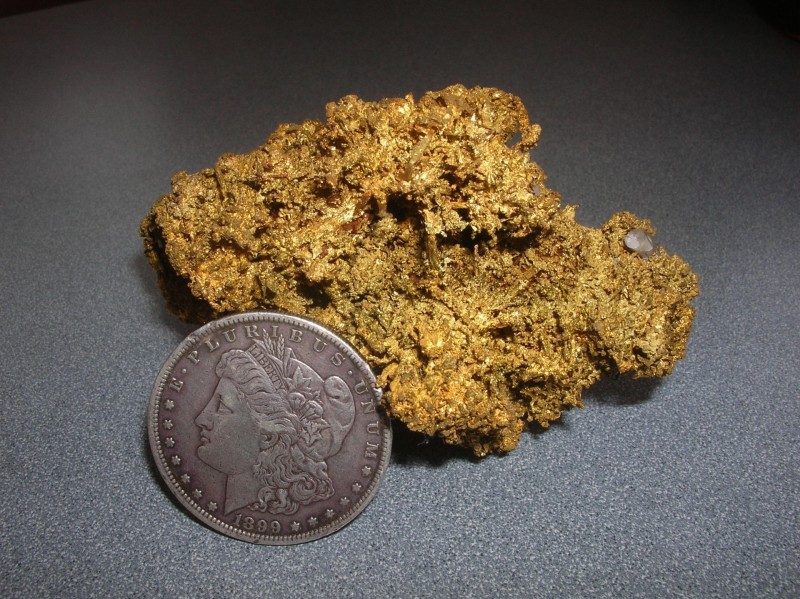
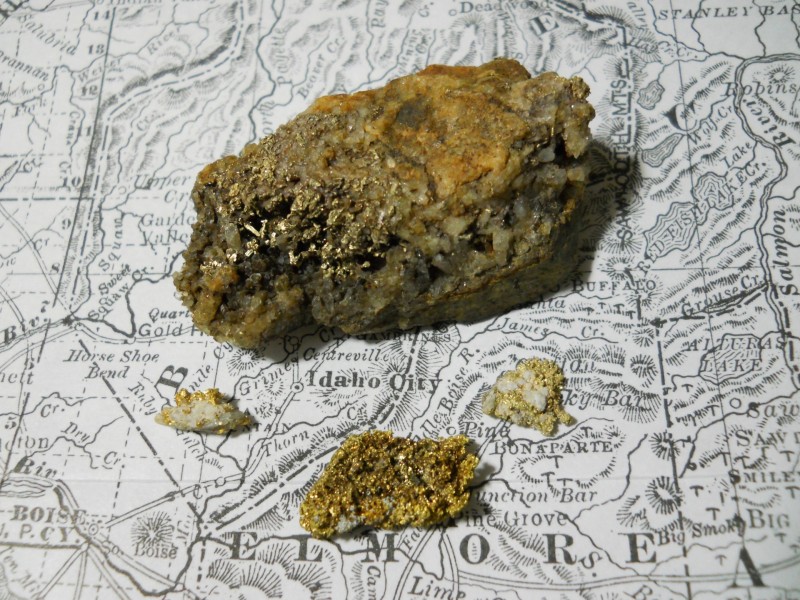
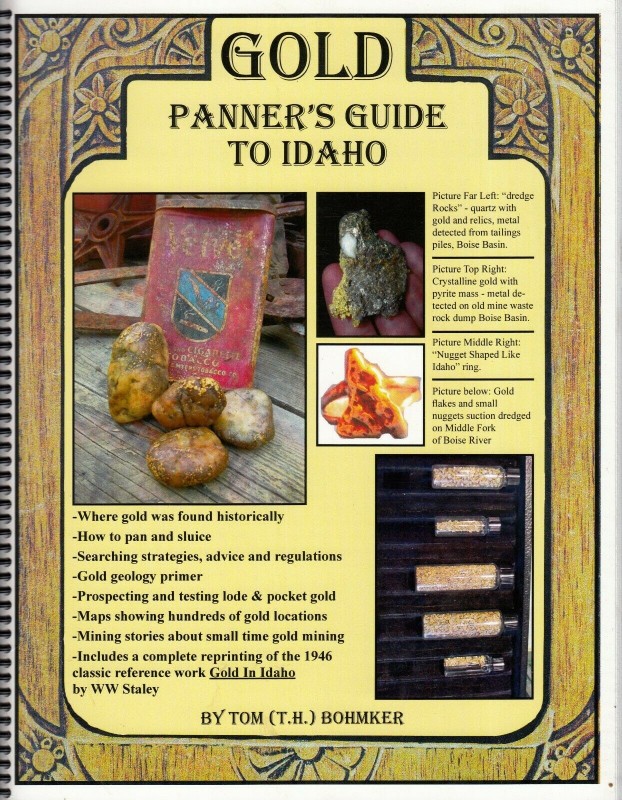

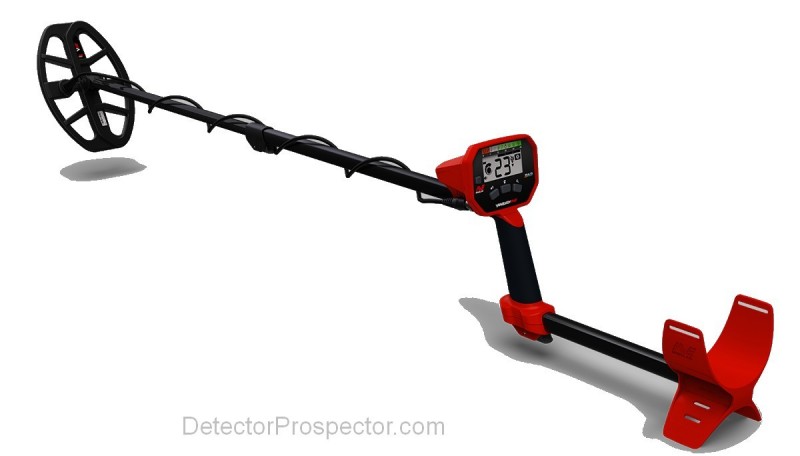

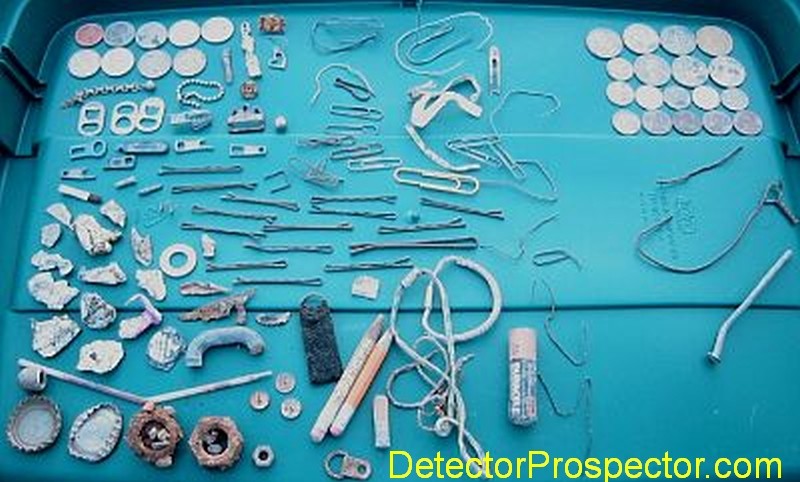
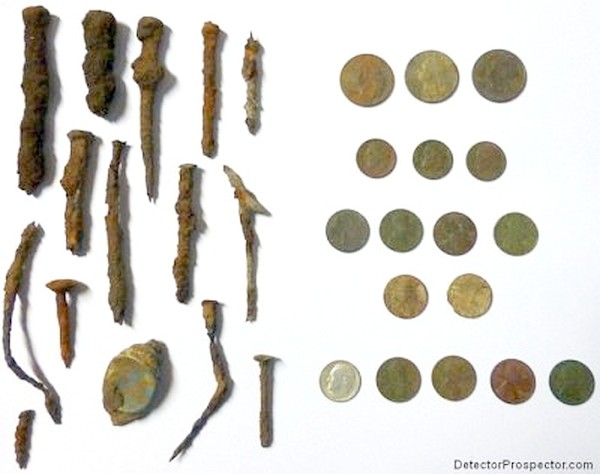

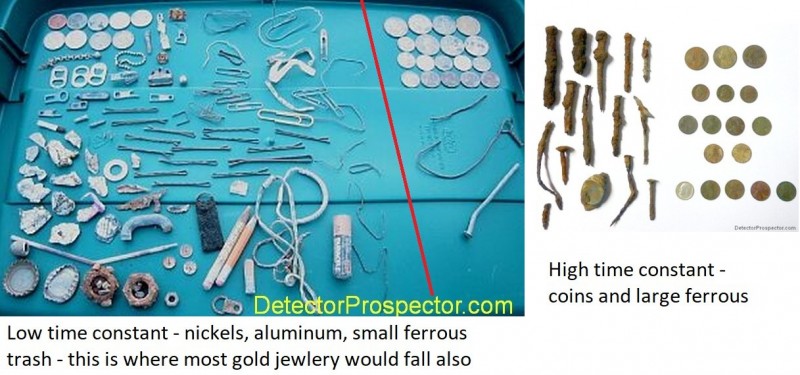
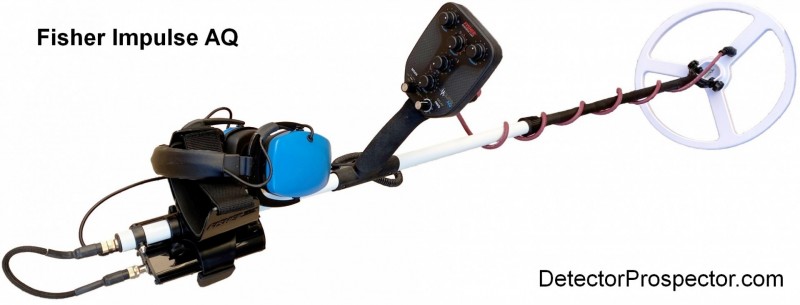



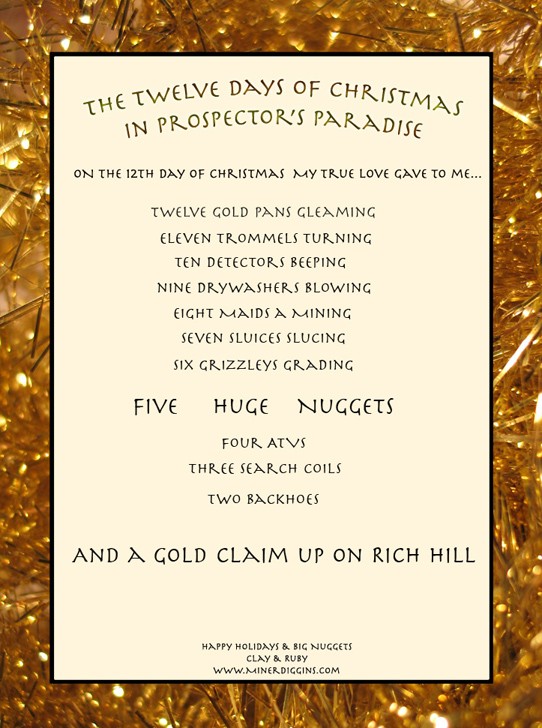

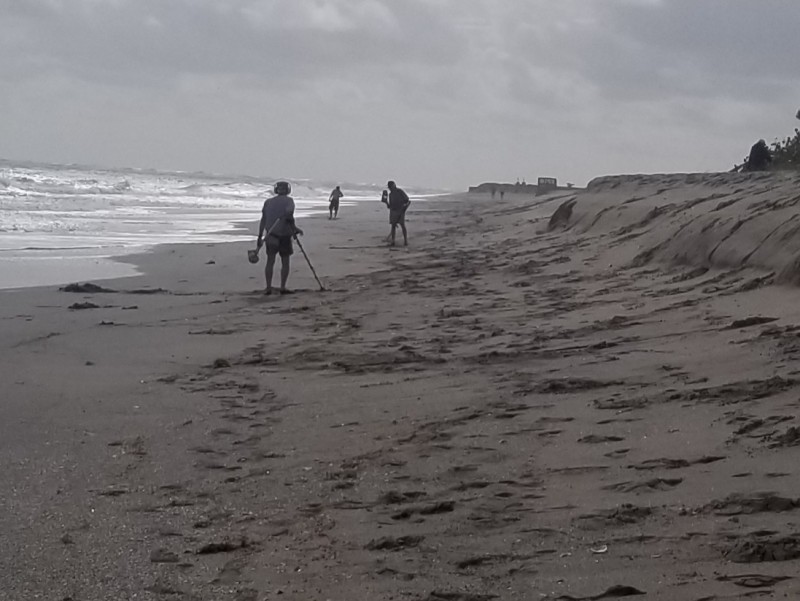
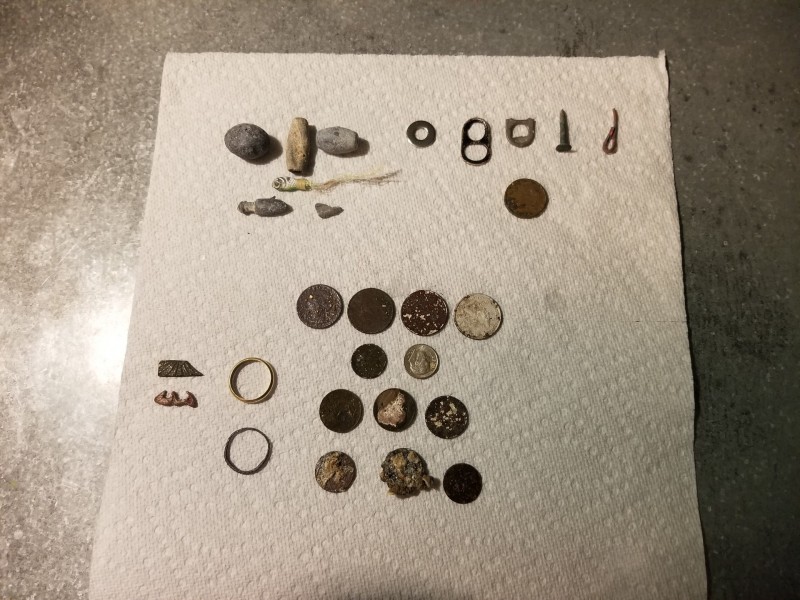
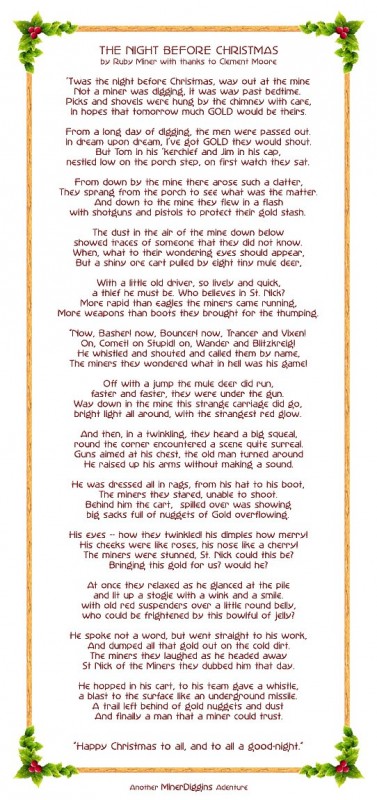

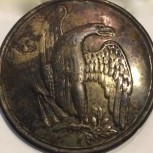
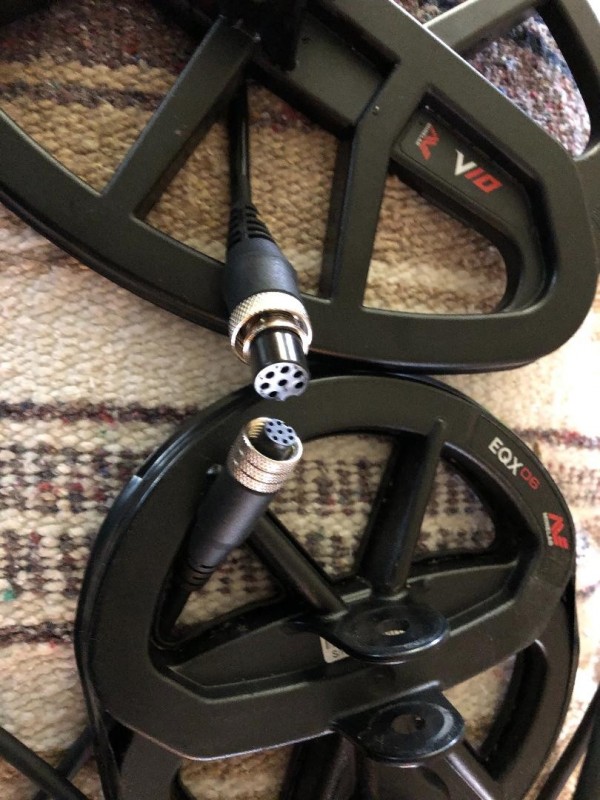

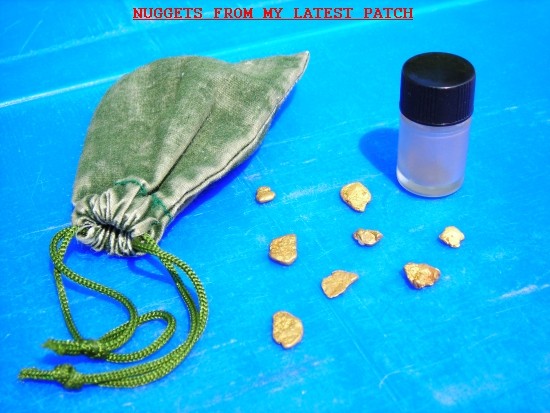
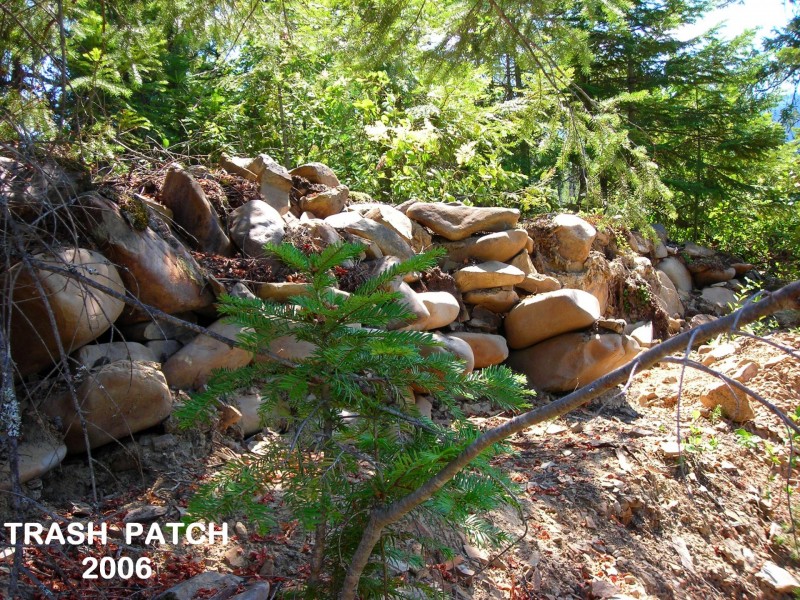
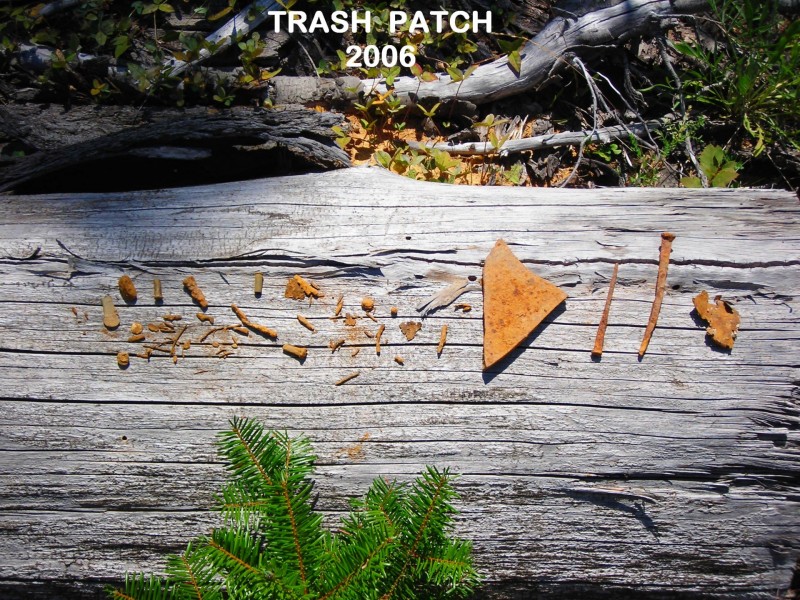
.thumb.jpg.77e4cb5bf39d44bdd2050d2edb7dfdb1.jpg)


